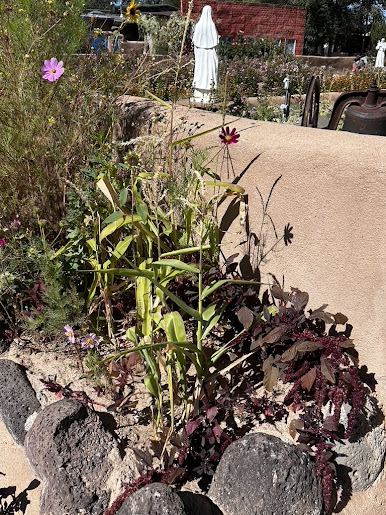I've been growing Hopi "red dye" amaranth for a long time here in coastal SC and GA.

Last September I was lucky to spot some on a trip to New Mexico, seen here in Rancho de Taos, lower right of the photo below, outside the mission church that was painted by Georgia O'Keefe in 1930. It is next to another important plant for natives peoples, corn.
Red amaranth is a common foodstuff in many places. It seeds like crazy and always shows up in the yard or in a pot. I've only purchased seeds once, years ago. It's a really beautiful plant, sometimes going a bit green. The flower heads are mostly seeds. I've been tempted to "harvest" the seeds for cooking, but I have not tried this yet as "winnowing" seems like a bit of work.
An online search shows that some people have success dyeing yarn with it. I've tried multiple times. The key point is to NOT overheat, I did that once. Several times since then I tried solar dyeing, once with some yarn/madder leaves in a closed jar...I left it several days in the hot sun and was rewarded with...no color. I also tried this in a less smelly open container but this also failed. Despite our heat here in coastal SC and GA I think that it did not get hot enough.
I tried again this past September...I chopped an amount of leaves, stems, and seeds, you can see the color rubbing off on the cotton sheet that I gathered the leaves in

This attempt was to try a more controlled low heat on the stove, using a glass container in a water bath to extract color. I watched the temp carefully, keeping it at 140oF or a bit less. I should note that the pH of my tap water is a perfect 7...neutral. The yarn was premordanted in alum.
Result? a lovely warm tan shade. It simply won't take up the color, and perhaps I did not use enough dyestuff.















_(15183920495).jpeg)

.jpeg)
















.jpeg)

